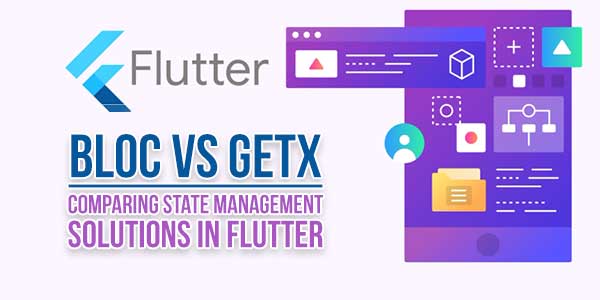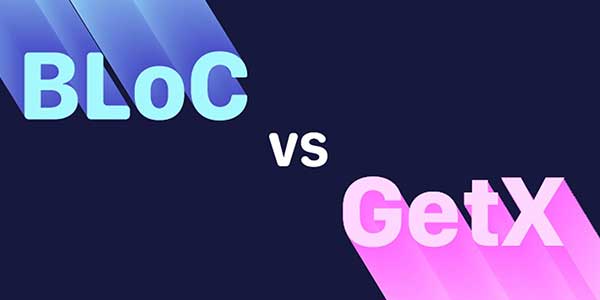
State management is a crucial aspect of building robust and efficient Flutter applications. It helps developers manage and update the state of their applications in a predictable manner. Flutter provides various state management solutions, and two popular options are Flutter BLOC and GetX. In this article, we will compare these two approaches and discuss their pros and cons.
Table of Contents
Flutter BLOC:
Flutter BLOC (Business Logic Component) is a design pattern that focuses on the separation of concerns. BLOC ensures a clear separation between the UI and business logic. It consists of three main components – the UI, the BLOC, and the Repository.
The UI layer is responsible for displaying widgets and receiving user input. It communicates with the BLOC layer through events and observes the output using streams. The BLOC layer processes these events, updates the state, and emits output to the UI layer. Finally, the Repository layer handles data fetching and persistence.
Flutter BLOC provides a clean and predictable way to manage the state of an application. It allows developers to write reusable business logic that can easily be tested. The use of streams and events enables efficient state updates and reduces unnecessary re-rendering.
On the downside, Flutter BLOC requires more boilerplate code compared to other state management solutions. Setting up streams and listening to events can be a bit tricky for beginners. Additionally, integrating the BLOC pattern into existing projects might require significant refactoring.

Flutter GetX:
Flutter GetX is a powerful state management library that offers a complete suite of tools for building applications. It focuses on simplicity, productivity, and performance. GetX stands out with its ease of use and extensive features.
GetX provides three core concepts – State Management, Dependency Injection, and Routing. It eliminates the need for streams and simplifies state management using reactive programming. GetX offers both reactive and non-reactive state management options, allowing developers to choose the approach that suits their needs.
Dependency Injection is another strong feature of GetX. It facilitates code organization and makes testing and maintaining applications easier. GetX also includes a highly efficient routing system that simplifies navigation within the app.
The advantages of Flutter GetX lie in its simplicity and the reduced amount of boilerplate code. It is beginner-friendly and easy to pick up. GetX also offers seamless integration with existing projects, making adoption hassle-free.
However, the extensive features provided by GetX might overwhelm some developers. The learning curve can be steeper compared to Flutter BLOC. Additionally, as GetX is a relatively new library, it may have a smaller community and fewer available resources.
Conclusion:
In conclusion, both Flutter BLOC and GetX are capable state management solutions for Flutter applications, each with their own strengths and weaknesses. Flutter BLOC offers a robust separation of concerns and predictable state management. On the other hand, GetX prioritizes simplicity, productivity, and performance. The choice between these two options heavily depends on the project requirements, team expertise, and personal preferences. Regardless of the chosen solution, mastering Flutter state management is essential for building great Flutter apps.


















Be the first to write a comment.